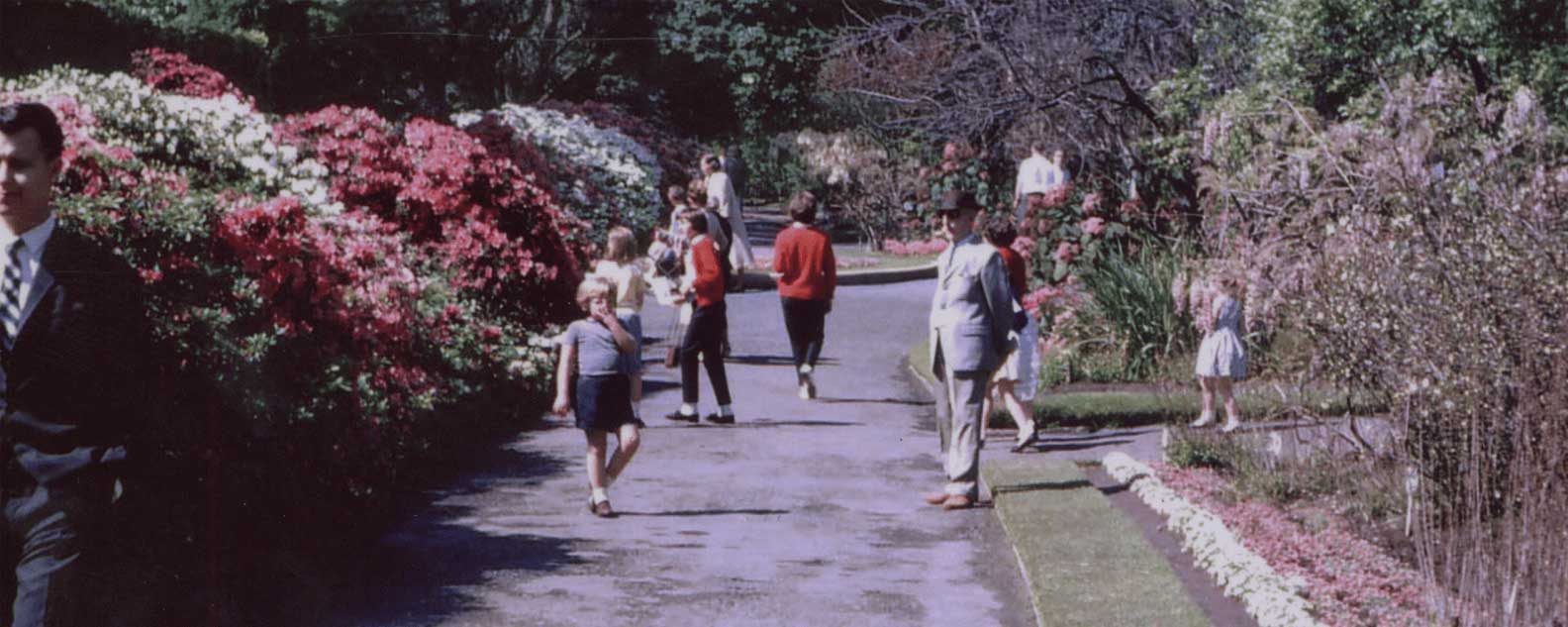Digging into our history – 1900s
The Royal Botanic Garden Sydney’s history is no ordinary tale, despite the name, it wasn’t until 1959 that it became ‘Royal’. There is much more to the Gardens than just flowers and stunning horticultural displays. This three-part blog series will travel through the 202 years of existence and delve into the exciting history of one of Australia’s most popular tourist attractions.

The 1900s was revolutionary, not just for the Gardens but internationally. Sydney was a city of promise, home to more than a million people, abuzz with commuters in horse-drawn wagons and trams.
A time of rapid growth, as the nation transitioned from steam to electric, the Gardens remained in step with the rest of the city throughout the 20th century.
1890-1920s: A blossoming Garden under Maiden
Following the long-term leadership of Charles Moore came Joseph Maiden. Appointed in 1896, Maiden was the first Director who was also a professional scientist. Maiden’s influence in lifting the scientific role of botany in Australia and the continuous publications that emanated from the Botanic Gardens still resonates today.

Maiden in his office
Under Maiden, the Garden was invigorated. The National Herbarium of NSW was completed and officially opened in 1901, which today stores over 1.4 million preserved specimens (in its collection, the Herbarium stores samples from Sir Joseph Banks and Dr Daniel Solander’s collections, dating back to 1770).

The original location of the National Herbarium of NSW circa 1890, which is now home to the Maiden Theatre which holds events, exhibits and workshops
Maiden was also the first Director to appoint female staff. One of the most significant female staff employed at the time was Margaret Flockton. From 1901 to 1927, Flockton became Maiden’s “right hand woman”, and longest serving botanical illustrators in the Garden’s history. Known for her meticulous and skilful renderings of plants, Flockton’s legacy was almost lost in the mists of time until her works were brought back to life in 2004 with the Margaret Flockton Awards to recognise the art of botanical illustration.

Margaret Flockton
1920-1940s: A tragic death
While the 1920s were a time of growth and development for the Garden, less could be said for the 1930s. The Great Depression and the eventual march to war starved the Garden of funds and a workforce. One other Garden tragedy would unfold during the 1930s and 1940s that would be – for a time – the talk of the town.
That is, the death of the Wishing Tree.
Originally planted in the Governors private domain at the time of Governor Macquarie, the Norfolk Island Pine that became famous as the Wishing Tree was deemed too large for the Governor’s Garden by Elizabeth Macquarie, and she ordered that it be relocated to the adjacent botanic garden. The tree lasted until 1945 when it eventually failed due to decay.

The famed wishing tree, circa 1885
The cultural significance of the Wishing Tree to the community of Sydney was immense. Rituals had grown up around the tree, with local “dames” (as Joseph Maiden referred to them) entrusting the tree with their deepest wishes and desires. When it was recognised as in terminal decline, a community debate erupted in the local media about what to do. Eventually a new Norfolk Island Pine was planted in 1935 just a short distance away, and is still in the Garden today.
1950s: The Garden’s Royal break out moment
In 1958-59 progress meant an irrevocable split, as the Garden and the Domain became forever separated due to the construction of the Cahill Expressway. The work meant an urgent redesign of the Garden’s main entrance points and three of the most historic gates - Government House (1869), Woolloomooloo (1873) and Palace Garden (1889) – all had to be relocated.
Until 1959, the Botanic Garden of Sydney was without the “Royal” epithet. However, it was in that year that the epithet was added to the name to recognise its association with the first visit of a reigning monarch to the country (Queen Elizabeth II first officially first touched Australian soil in the Domain) and its leadership in botany and horticulture. The site was now known as the ‘The Royal Botanic Gardens’.

Queen Elizabeth II planting a tree during her visit, which would lead to the Botanic Garden of Sydney earning its Royal title
1960-1980s: Drugs and murder
Marijuana or Indian Hemp was cultivated in the Garden nursery in the 1960s under the watchful eye of the NSW Police. The Garden’s plantings were in order to assist the NSW Police in training personnel in recognising illegal plants and even in identifying the possible origins of plant material.
During the 1960s the Garden’s plant research facilities even helped solve crimes. The Garden’s research facilities had become an industry leader in plant identification and origin identification, and had proved useful to NSW Police in analysing evidence from crime scenes. One of the most famous crime-busting episodes was when the Garden’s work assisted in solving the Graeme Thorne kidnapping-murder case.

A local news article which outlines the police and forensic work that the Gardens assisted with

Image of the 'medicinal garden' which would assist the NSW Police in identifying illegal plants
In the late 1970s, further support from the NSW Government created the expanded National Herbarium of NSW that we know today, and expedited the development of two sister botanic gardens: the Blue Mountain Botanic Garden Mount Tomah and Australian Botanic Garden Mount Annan.

The site of the Australian Botanic Garden Mount Annan. It was officially opened by the Duke and Duchess of York on 2 October 1988 as the final NSW Bicentennial project. It showcases approximately 2000 species of Australian native plants.

The site of the Blue Mountain Botanic Garden Mount Tomah circa 1887. Open to the public 1 November 1987, it holds some of the most stunning cold weather plant species and is the only botanic garden in the world located in a World Heritage Site.